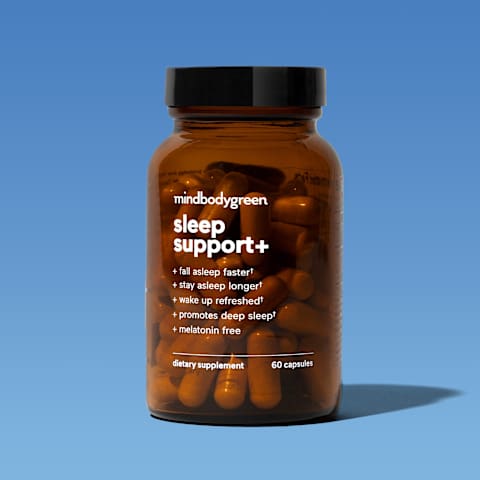Kya has an anxious attachment style.
She was immersed in upheaval as a child and had little TLC from her emotionally distant parents.
The brutal ending of Kya’s last relationship left her feeling more anxious and hopeless than ever.

Her partner cheated on her, and she just can’t get over the betrayal.
Kya is tired of feeling clingy and worrying about being abandoned.
She wants to feel strong and secure inside herself.

Have you found that your relationship history is filled with one wound-triggering issue after the other?
Do your attachment issues keep you from getting close to your partner?
Do your partner’s attachment issues keep you from getting inside those defensive walls?
If so, you’re not alone.
Here’s how you’ve got the option to understand and actuallyhealyour attachment issues in your relationships.
What are attachment issues?
Your attachment style is your mind’s template for how safe you are in a relationship.
Whatever attachment style you havesecure, anxious-preoccupied, dismissive-avoidant, or disorganized avoidantwas formed early in your life.
Your attachment wounds are exposed in intimate relationships where vulnerability, trust, and safety are mostvital.
The 4 attachment styles.
To understand your attachment issues, it’s important to first understand what your attachment style is.
Some people have a well-defined attachment style, and some have a blend of styles.
It’s perfectly acceptable to create a “blended” attachment description to reflect who you are right now.
For example, you might feel that your style feels 80% secure attachment and 20% anxious attachment.
The goal is to increase your personal awareness rather than to simply label yourself or your partner.
Secure attachment
People with asecure attachment styletend to have it a bit easier in relationships.
Securely attached individuals tend to beemotionally available, grounded, and nonreactive.
As ideal as this sounds, even people with a secure attachment style can get triggered now and again.
When two securely attached people are in a relationship, ruptures happen infrequently and are often healed smoothly.
Individuals with an anxious attachment style often have low self-esteem, yet they tend toidolizetheir partners.
A preoccupation with the relationship often results, and obsessive thought patterns are common.
Although often submissive, the anxiously attached person can become aggressive if triggered.
Dismissive-avoidant attachment
Individuals with adismissive-avoidant styleoften appear independent and may have high self-esteem.
They often think they are superior to othersparticularly in romantic relationships.
Aloof and self-focused, these often-charismatic individuals prefer superficial connections and often prefer hookups and noncommitted relationships.
The ambivalent, dismissive-avoidant throw in puts up walls and pushes intimacy away.
Why do attachment issues matter?
The good news is, youcanchange your attachment style.
How to heal your attachment issues.
Feel free to work through the steps on your own or with a trusted partner.
If working with a partner, your partner willalsocomplete each step.
Get to know your attachment style.
Being aware of your attachment style is one of the biggest keys to healing your attachment wounds.
Discover your partner’s attachment style.
Self-reflective journaling can be one of the most powerful self-growth tools.
It’s important to be compassionate and nonjudgmental as you work.
Set aside time to journal about 10 upsides of your attachment style.
Take a break, and then focus on 10 downsides of your attachment style.
For example, a person with a dismissive-avoidant style may journal and realize that one upside is feeling self-sufficient.
Later journaling may reveal that one downside to the dismissive-avoidant style is the tendency to feel isolated.
Notice triggers.
Get to notice when your attachment wounds get triggered.
Keep a journal where you could make nonjudgmental notes about attachment issues.
If you’re currently in a relationship, just make simple, noncritical notes when you feel triggered.
If you’re not in a relationship, you’re free to make notes about old relationship patterns.
Find your wounds.
Reflect on the themes in your triggers.
As you investigate the various themes, you see several clear patterns arise.
Know your needs.
Investigate your attachment wounds through journaling.
You may be able to trace each wound back to a specific incident or pattern in childhood.
Explore each wound’s theme through journaling about how the wound affected you in childhood.
Then progress to journaling about how these patterns manifest in yourcurrentrelationship or prior romantic relationships.
As always, take a compassionate, nonjudgmental approach that supports personal growth.
This increased awareness will help you to appreciate your wounds and share them with your partner.
You may then realize that your partner’s habit of multitasking during discussions makes you feel ignored and rejected.
Practice stating your needs.
I feel loved and connected when you focus on me during our conversations."
Hold your boundaries.
Sometimes, however, partners don’t respond in healthy ways and may even purposefully provoke wounds.
As well, even well-intentioned partners unconsciously revert to old habits.
Discuss conscious “wound repairs.”
As you and your partner progress, talk more deeply about the issues behind your wounds.
Explore childhood patterns and family issues so that you each understand and appreciate the other’s attachment wounds.
You deserve to be safe, secure, and loved.